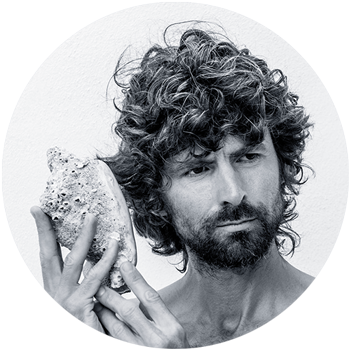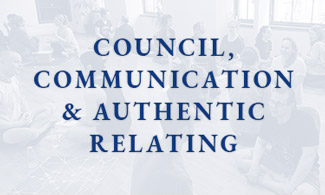
Representing That Which is Beyond Representation
At school, I was taught many things that I have since come to consider as being highly inaccurate, misleading, or mistaken. One of these was the idea that Hinduism is a polytheistic religion, because it believes in many gods.
There are a number of problems with this statement. One is the word Hinduism itself, because it is hard to pinpoint what it means. Of course, this is true for many words, people can use the same term understanding it in very different ways, however this word is a rather extreme case. To illustrate, I have been at conferences on the Indian Intellectual Tradition at which learned and venerated Sanskṛt pundits admit readily that no one really agrees what this means. The term itself only came into being when the colonising British wanted a way to refer to the vast body of religious practice which they encountered in the lands south of the River Indus. This vast body of religious practice was to the colonising agents most confounding. As colonisers intent on plundering the riches of the subjugated lands, they were, as colonisers usually are, operating in the divide and rule game. And to divide and rule, limiting names that split people and deter them from their common humanity and retreat into cliquish, schismatic identifications are helpful. Further, as colonisers, names that differentiate the subjugated people, that accentuate somehow their otherness, can make it all the easier to treat them as less than human, and so ‘Hinduism’ was born.
Further, to my mind the very word is a problem, because, just like Bob Marley, I am ‘sick and tired of the ism-schism game’; like Satish Kumar, I think we need to make all ‘isms’ ‘wasms’ – things of the past, and move towards more inclusive and reconciliatory ways.
To my mind, this unification, this inclusive reconciliation is the whole aim of yoga.
Indeed, in my explorations of the yoga tradition, I have come to see that Bob and Satish, though they have coined beautiful and resonant phrases, are not expressing anything new, but the same feeling that has motivated many of the great sages, seers and visionaries of spiritual traditions from all around the world.
The reason I find the idea of Hinduism so misleading though, is that in Indian Philosophy, on which the religious practices that developed in the lands south of the River Indus are based, God is One. The Paths are Many but the Truth is One.
But wait a minute, someone brought up in an Abrahamic monotheist land might say, don’t ‘the Hindus’ have hundreds of gods?
Yes, they do, and that is actually the point.
Because God is One, God is beyond name and form. As soon as we name something we limit it. When we define, we confine and diminish. The idea is that God is in and beyond everything. The Supreme, the Ultimate, defies description, exceeds all boundaries and barriers. And this is why to my mind, any ‘religious’ thinking that limits God is flawed, any so-called religious idea that imposes barriers and boundaries, that works to divide and rule is not connecting us to God, to the Supreme, or to our innate highest potential, but to our fear, and is based on politics, not spirituality.
The point then, is that God cannot be named, cannot be represented by any particular form. In some traditions, this has led to the injunction that it is wrong to make any image or symbol of God: of that which is beyond symbol. In others, the emphasis is on seeing the Supreme in all living things, and cherishing and worshipping the rivers and the mountains, the sky, the rains, the fields and every living, pulsating thing, from the denser rocks and stones to the subtler water of life, the fire, air and the very space we depend on. Both of these tendencies can be found in various streams of Indian spiritual and religious practice: the first notably in certain streams of Advaita Vedānta in which the Supreme is considered primarily as nameless, formless; the second in certain Tantric streams which share much in common with animistic traditions, and which scorn the manmade temple as redundant. What blind man needs a temple, when the temple of the earth is all about him? However, one of the great beauties of the Indian tradition is the way that it reconciles and includes all these possibilities.
In some Tantric lineages for example, it is just as likely for the Supreme to be discussed in terms of the great Void, or the great wholeness, as through the lens of an archetype, such as Śiva, or a form of Mother Divine such as Tārā, Durgā or Kālī.
And it is this inclusivity of the Indian spiritual and to a significant degree religious tradition that I feel is most misrepresented by an ismatic-schismatic term.
It is very significant that on visiting a temple dedicated to a particular representation of the Divine in India, that one is highly likely to notice representations of other aspects of the Divine alongside the ‘main deity’. For example, one may go to a temple dedicated to Śiva, constructed by people that use Śiva as their preferred representation of the Supreme. At this temple, the ‘image’ or icon of Śiva as the Supreme is the liṅga.
However, also, within the temple, there may be representations not just of Śiva’s ‘family’: Gaṇeśa and Skanda, his ‘sons’, and of Mother Divine, his beloved, but also of images of and associated with Viṣṇu.
The idea is that the particular symbol is not it. ‘It’ goes beyond name and form. And so the idea of hundreds of gods, and of even one god having a thousand or more names or forms, is to remind us, overtly, that the name is not it, no particular form really represents it. The different names and forms are just means to usher us towards a direct experience that will defy description or representation. But yoga is practical, so symbols, forms, names and stories are used and admitted, because these can help us learn. They carry rich educational value and can help draw forth that which is already in us, inviting our awareness more fully in the direction of recognition – of the wholeness, the all-one-ness that we are really all part of.

James Boag | Whole Life Yoga
The yoga of the whole human being. Practical philosophy, storytelling, movement, inquiry, looking in ways that reach beyond our habitual ways of looking.
Listen to James’ unique whole life yoga perspectives on the WHOLE LIFE YOGA podcast.











